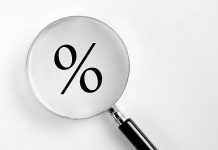The Canadian economy expanded by 3.1% quarter/quarter annualized (q/q) in 2023 Q1. Furthermore, the flash estimate for April showed a 0.2% month-on-month increase.
Consumer spending drove the first quarter gains, up 5.7% q/q. This was led by spending on durable goods, including “new trucks, vans, and sport utility vehicles”. Spending on services also rose, led by Canadians’ desire to go out to dinner and bars.
Exports also rose by 10.1% q/q, led by sales of “passenger cars and light trucks, unwrought gold, silver, and platinum group metals and their alloys, other crop products, and wheat.” At the same time, imports were flat at 0.9% q/q, as increases in oil imports “were largely offset by declines in imports of passenger cars and light trucks, unwrought gold, silver, and platinum group metals and their alloys, and clothing, footwear, and accessories.”
Investment was a drag once again, as housing investment (-14.6% q/q) led the decline. Statcan noted that the “decline in investment was widespread—as new construction (-6.0%), renovations (-2.1%), and ownership transfer costs (-1.5%), which represents resale activity, were all down. The decline in new construction was observed in every province and territory except Yukon.”
The incomes of Canadians also rose, as employee compensation rose 7.2% q/q – “the largest quarterly growth in compensation of employees since the second quarter of 2022.” This was driven by higher wages and employment gains over the quarter. The savings rate hit 2.9%, down from 5.8% in 2022 Q4.
Key Implications
Canada’s economy bounced back in a meaningful way in the first quarter of 2023. Growth was driven by an acceleration in consumer spending, supported by a record-breaking increase in employment during the first quarter and wage growth that now outpaces inflation. This labour market strength enabled final domestic demand to surge by 2.6% q/q, well above the trend rate of growth. The encouraging flash estimate for April GDP points to less of a deceleration heading into the second quarter than previously expected, with 2023 Q2 now tracking around 1% q/q.
The Bank of Canada’s (BoC) next interest rate decision is next week, and while today’s report might not force a move off the sidelines, it may be used as rationale for a hike later this summer. Thus far, the BoC’s rhetoric has focused on its expectation for a quick deceleration in economic growth over the remainder of the year. That slowdown still seems likely, but if the data keep coming in hot, the BoC may be compelled to move once again.












